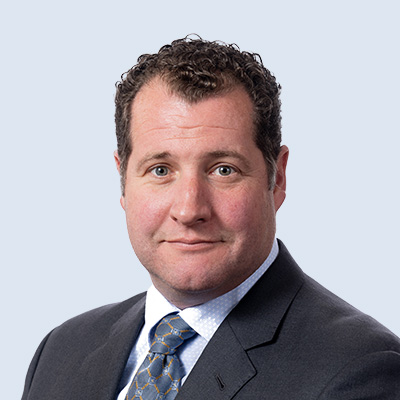Kevan Savage: Well, thank you all for joining us today for Unveiling Pipeline to Profits, some recent research from Alexander Group around demand generation performance and investments. My name is Kevin Savage. I’m a principal in the firm. I run our marketing practice. I’m joined by my colleague Chris Semain, who is a principal in the firm as well, and co-leads our tech practice. Chris, thanks so much for joining us today.
Chris Semain: Thanks for having me, Kevin.
Kevan Savage: So we’re going to share with the audience today some recent trends that came out of our demand generation research. And I’m going to bring the marketing valence to the discussion. Chris is going to bring the tech practice, understanding of what we’re seeing with clients every day. And I’m going to start with the executive summary around the research. And this research was born from current and prospective clients looking to get a real strong sense of what other organizations are looking at as it relates to demand generation out there in the marketplace today. So from a top-line standpoint, one of the things we wanted to start with when we commissioned this research was we wanted to get a strong set of participation from what we call healthier organizations. These are organizations that are hitting the revenue expectations for the year. They have annual growth rates of 6 to 10%. And we wanted to do that because demand generation and for healthier organizations is very different when you think about it from an incremental growth accelerator versus using demand generation to meet underperformance from your organization.
And so a couple themes emerged from the research. First set of themes was around investments, 61% year over year, reported as growth in these investment profiles for demand generation and tech companies. And a couple of activities surfaced alongside that investment. One is around AI. Of course, AI is everything, everywhere, for everyone at the moment, but more specifically AI for SEO and mid-funnel content development, and aggregation. So marketers needing to generate things like knowledge centers, education hubs, ways to drive better demand generation conversion in that mid-funnel content, account-based marketing and allocating more demand generation investments alongside coverage models, segmentation tiers, up-market and enterprise, mid-market and down in SMB sectors, or market segments where historically those budget allocations weren’t positioned that way. Third is around roundtables and virtual forums. All of our participants said look, events, conferences, webinars, we got to continue doing those things as an organization for our brand. But virtual roundtables, forums, great mid-funnel audience venues to drive not only traffic to, but also drive great conversion rates. So a lot more focus in investment on that front. We also asked some questions around who is driving the performance of pipeline functionally within organizations. 45% of the pipeline being reported as influenced by marketing. So pretty significant percentage as it relates to, you know, kind of the other functions that are generating pipeline in tech companies.
And then we asked a series of questions around the qualification rates and how those are improving. And the bottom of funnel results in terms of closed won revenue or bookings. So really strong improvements in marketing qualified lead to sales acceptance status, 31% increases year over year, and 38% year-on-year growth in closed won revenue or bookings. And so pretty strong, healthy profiles in terms of demand generation investments and performance expectations and returns being cited from our participating companies. So we want to get some insights in terms of what’s happening in demand generation from a technology vertical standpoint, and Chris has great expertise in that area. So, Chris, maybe to tee up the first question, you know, what are some of the challenges you’re seeing from your clients or hearing about from your clients on the topic of demand generation?
Chris Semain: Yeah, I think many people know that technology has had a bit of a topsy-turvy year. Demand for IT spend went through the roof during Covid, but after Covid subsided, we definitely saw a shift in investor appetite for high growth companies. And really what I’m saying there is the mandate shifted away from growth at all costs to, let’s call it, profitable growth. And what that really meant for sales organizations was re-indexing headcount in different go-to-market functions. And I bring that up here because I have found with many of my technology clients, a reduction with lead generation resources in addition to other other resources, whether it be sales reps, sales engineers, customer success managers, and so forth.
So, no customer-facing job was immune from that re-indexing that took place. And so, you know, you mentioned Kevin earlier about AI and some of the promises of it, some of which have come to fruition, most of which has not. But what I found is, is many of my clients had to take cuts in their SDR or their BDR functions, you know, whatever acronym you want to use, their lead gen reps. And so what kind of impact does that have on demand generation? Right reps rely on MQLs and SQLs, and the BDR function is paramount to that. So ultimately, if as an organization, you’re receiving cuts in that function, how do you do more with less? Right. So I found one of the biggest problems is, how do we maintain lead flow. How do we continue to keep the demand generation bucket humming along with, you know, instances of significant headcount, cuts of the BDR function, whether that could be 25% headcount reduction, 50%, you name it. So the hope here is with new technologies such as AI, you won’t need as many of those people, right? You can do more customization, better messaging, and actually produce messaging much, much faster and with less human involvement.
Kevan Savage: I think those are great points, Chris. And certainly, on the marketing front, we see a lot more happening around AQLs and leveraging AI in particular to kind of do some of the, you know, initial qualification and scoring. So even as, you know, you’re bringing more into the pipe, you’re actually making those SDRs or BDRs even more efficient than they need to be, or have had to need to be in the past, if you will. So a great, great points there.
Chris Semain: Many of my clients are really, really focused in on their ICP right now. Companies oftentimes think they’re good at it, but in my experience, more companies are not good. And I think in this world of grow more profitably, in this world of let’s maximize sales efficiency to the furthest extent possible. A lot of that means we need to be targeting the right account. So companies are really investing on what is their ICP, their ideal customer profile. And that ultimately is an important step for those BDRs to maintain or to actually improve their efficiency if, in fact, an organization has fewer heads than they did in years past.
Kevan Savage: Yeah, ICP certainly was a hot topic as part of this research as well. And, you know, one of the interesting dynamics around that is this notion of kind of indirect versus direct, go-to-market channels. So maybe talk a little bit about that, you know, how are your clients, how are they balancing demand generation for that kind of indirect and direct, you know, dynamic, if you will, where ICP, as you mentioned, is mission critical across both indirect and direct.
Chris Semain: It’s a timely question, Kevin, because one of the spots in the go-to-market model that’s getting heightened attention right now is the channel ecosystem. The partner ecosystem is going through a fundamental transformation. Obviously there’s the increase of the hyperscalers. I think companies no longer value the traditional reseller in the way they have in the past. And so there’s a lot of change taking place with respect to indirect routes to market. That being said, one of the most valuable activities that partners can play is actually bringing net new opportunities into the pipeline, right? Opportunities that the direct sales force is incapable of locating or will take time, take an extended period of time to locate. So there, I guess the first rule for me is always what are your SLAs in terms of your lead flows? Sometimes, believe it or not, a lot of companies don’t have that. Okay, well, if I need to get X number of leads, how what percent need to be coming from my channel? What needs to be coming from marketing, what needs to be direct source or self-sourced. And more often than not, companies don’t even really have a North Star in terms of what percentage of their leads should be coming from the channel. In addition to that, they’re not necessarily thinking about the incentive systems with respect to their channel partners. I mean, a lot of organizations will have things like deal registration systems, but ultimately, you know, they’re not necessarily examining the incentive program in a way that’s really going to motivate their channel partners to bring, you know, incremental leads into the funnel. So, I mean, a couple of things that I keep encouraging my clients to do is A) make sure that you do have a North Star in terms of the contribution you’re expecting from your channel partners. And then 2) also making sure that you have the right incentives and processes in place that’s going to motivate them to bring those leads into your organization.
Kevan Savage: Well, thank you so much for joining us, Chris, to share our industry best practices and insights with the audience today.
Chris Semain: Thanks for having me, Kevin. Really appreciate it.
Kevan Savage: And to the audience. Thank you for attending today. We went through unveiling a pipeline of profits, recent demand generation, performance and investment trends from Alexander Group. For more information, visit AlexanderGroup.com.






